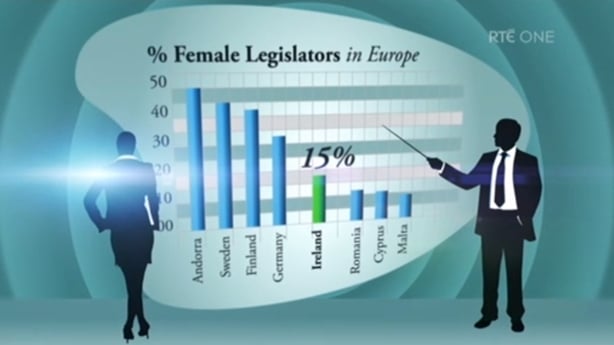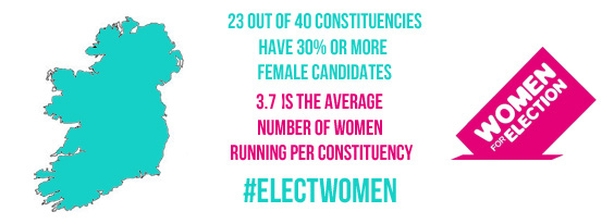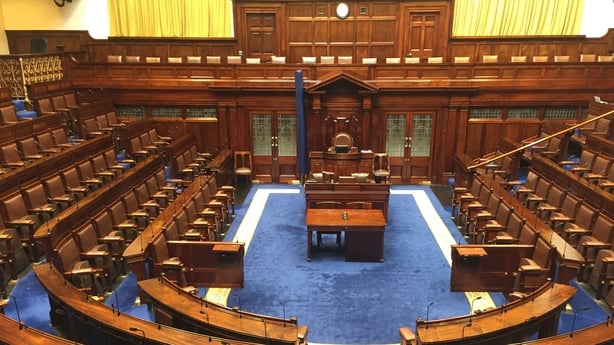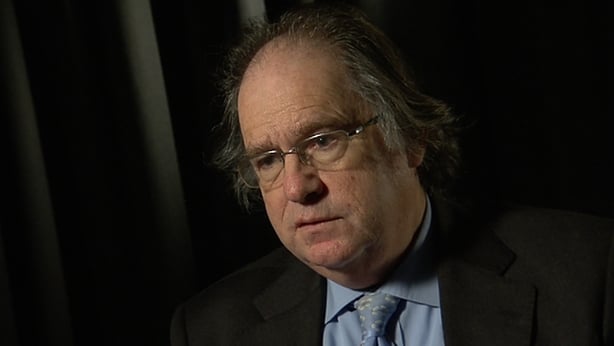This 2016 election looks increasingly like the election that broke the mould.
Of course we have had other elections like that.
In 1977, we saw PR and Promises and Fianna Fáil won a majority not just of seats but of the vote; most recently in 2011, we saw Fianna Fáil relegated to third place, but even after that election, the government was formed by two established parties who had often governed together.
This time the bookies’ favourite is for a historic alliance of Fianna Fáil and Fine Gael but the electorate may yet have other ideas, as some seat predictions suggest that even this pairing may not quite get a majority.
It is a far cry from 1977.
This election was supposed to break the mould for other reasons, but one of the most important was to upset the deeply established pattern of government by men.
Ireland is well down the league table for gender equality in parliament: so far down that it is not Premier League or even Championship, although at least with pretensions to make it out of non-league territory.

Phil Hogan may go down in history for some people on a level with other notorious political figures like Oliver Cromwell as the man who invented Irish Water, but he also introduced legislation that incentivised parties to nominate a lot more women as candidates in Dáil elections.
This time parties must nominate women to at least 30% of their candidacies, next time it will be 40%.
Failing to do so will mean they forfeit getting their election expenses reimbursed.
The legislative route was chosen because parties are seen as the problem, and they were not seen as likely to adopt such quotas on a voluntary basis – as is the case in some of the countries in the Premier League.
There is a lot of research which explains why women might be less likely to want to pursue a political career: because of the family unfriendly hours, and the needlessly antagonistic nature of inter and intra party competition for instance.
But many men would reject a political life for those reasons and there are still plenty more happy to step into the breach.

There was also an argument that while parties were willing to nominate them, female candidates were less popular with voters, unless they happened to be closely related to a former male incumbent.
Along with others I have published quite a lot of research which gives no support to that argument (and even if it was true it would hardly justify the bias).
[A recent piece is available here as part of a special online edition of Irish Political Studies]
It is quite clear that women candidates on average win fewer votes than men, but this is essentially because sitting TDs tend to win more votes than their challengers, and women are much less likely to be sitting TDs.
That apart, differences are minimal.
This result holds when we look at patterns within parties as well as across them, and when we allow for the contribution of other factors to candidate success, such as previous political experience and how much money was spent on their campaign, and when we measure ‘success’ in several different ways.
There is a ‘gender gap’ in party voting sometimes with women more likely to support one party and men another, but those gaps are small at present.
Sinn Féin gets more support from men, but the difference is relatively small and shrinking.
Even if there is no voter bias against women as candidates, it is possible that women voters would favour female candidates over male ones, but so far we have found no evidence for that.
This could change in 2016, because there are a lot more constituencies where voters have a wider range of choice, and often a choice between a male and female candidate within a favoured party.
Only the choice of voters of Limerick County is restricted to one between men.
It remains to be seen whether gender will be a bigger factor in voting behaviour this time around.
There were expectations that the quota would give us a new Dáil with a lot more women.

Those investing money with Paddy Power do not seem to think so. It is easy to see why.
Essentially it goes back to the voter’s preference for incumbents.
There are 146 running in this election. That leaves 12 spaces, and as one in three non-incumbents are women, we might expect women to fill one third of those, giving us a Dáil with just four more women in it.
Of course some incumbents will lose. My current Poll of Polls analysis suggests that eight Fine Gael TDs and 12 Labour TDs will lose their seats, along with a couple from smaller parties and Independents.
If these are replaced independently of gender that would give us another seven women elected, one third of the 21 seats.
Some incumbents will lose their seat to a new deputy from the same party – it always happens.
Since one in six incumbents are women, six incumbents defeats by a new deputy from the same party would be expected to send one additional woman to the Dáil.
On these calculations I estimate the new Dáil would have about 35 women, a slight increase but nowhere near the 30 per cent figure; that would be around 47.
This figure also assumes there is no gender differentiation in candidate success apart from gender.
Many of the women candidates are new ones, and many have been nominated late, with little time to mount a full campaign, so they may not be as successful as the typical non-incumbent male candidate.
Even a small bias could push that figure of 35 down closer to 32.
So the new Dáil, whether or not it comes to be seen as the one that broke the Civil War mould, will not be seen as the one that destroyed a rather older one.
But perhaps there is a crack showing?
By Michael Marsh, Emeritus Professor, Trinity College Dublin


